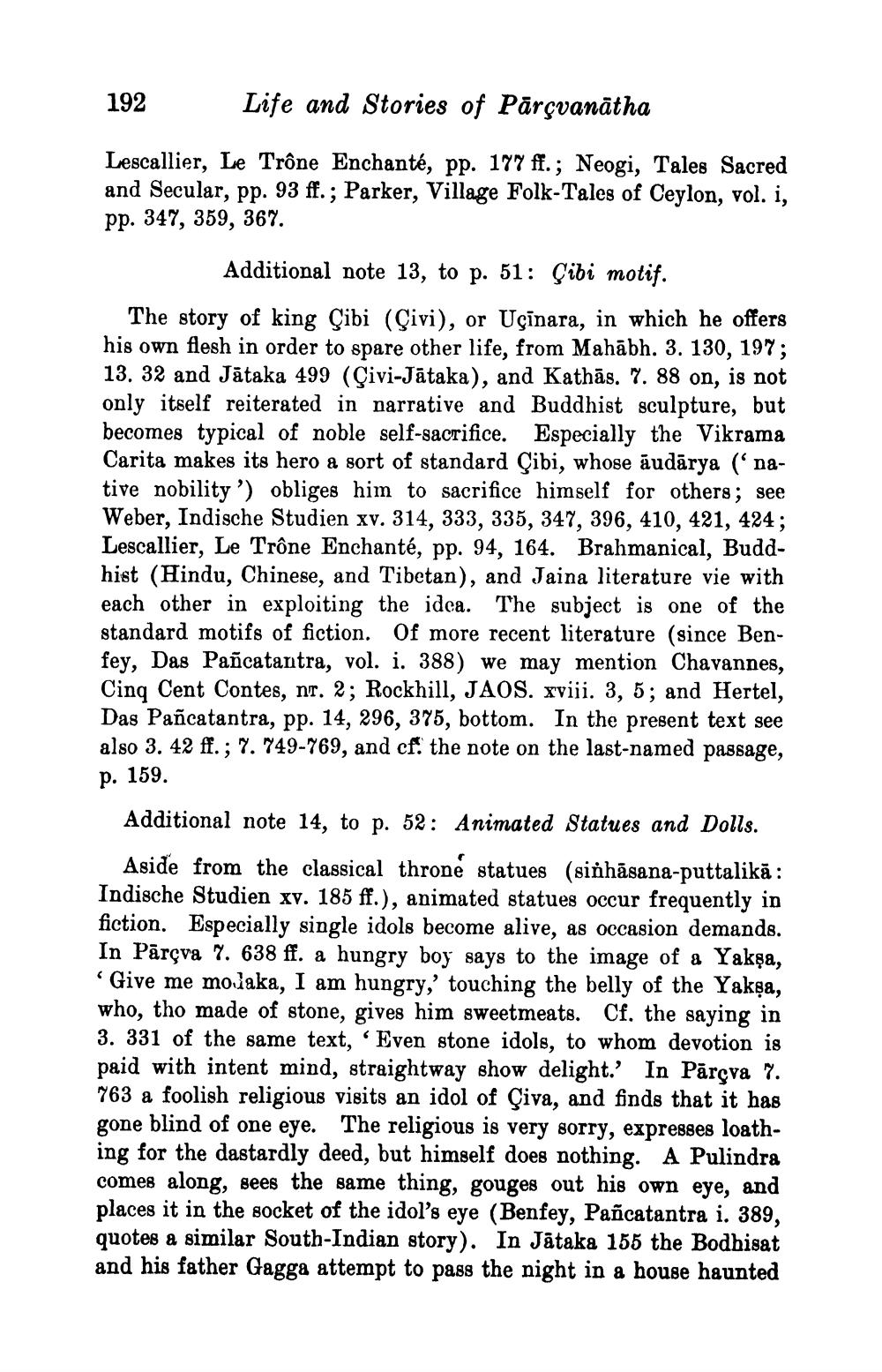________________
Life and Stories of Parçvanātha
Lescallier, Le Trône Enchanté, pp. 177 ff.; Neogi, Tales Sacred and Secular, pp. 93 ff.; Parker, Village Folk-Tales of Ceylon, vol. i, pp. 347, 359, 367.
192
Additional note 13, to p. 51: Gibi motif.
The story of king Çibi (Çivi), or Uçinara, in which he offers his own flesh in order to spare other life, from Mahābh. 3. 130, 197; 13. 32 and Jātaka 499 (Çivi-Jātaka), and Kathās. 7. 88 on, is not only itself reiterated in narrative and Buddhist sculpture, but becomes typical of noble self-sacrifice. Especially the Vikrama Carita makes its hero a sort of standard Çibi, whose audarya ('native nobility') obliges him to sacrifice himself for others; see Weber, Indische Studien xv. 314, 333, 335, 347, 396, 410, 421, 424; Lescallier, Le Trône Enchanté, pp. 94, 164. Brahmanical, Buddhist (Hindu, Chinese, and Tibetan), and Jaina literature vie with each other in exploiting the idea. The subject is one of the standard motifs of fiction. Of more recent literature (since Benfey, Das Pañcatantra, vol. i. 388) we may mention Chavannes, Cinq Cent Contes, nr. 2; Rockhill, JAOS. xviii. 3, 5; and Hertel, Das Pañcatantra, pp. 14, 296, 375, bottom. In the present text see also 3. 42 ff.; 7. 749-769, and cf. the note on the last-named passage, p. 159.
Additional note 14, to p. 52: Animated Statues and Dolls.
Aside from the classical throne statues (sinhasana-puttalikā: Indische Studien xv. 185 ff.), animated statues occur frequently in fiction. Especially single idols become alive, as occasion demands. In Parçva 7. 638 ff. a hungry boy says to the image of a Yakṣa, 'Give me molaka, I am hungry,' touching the belly of the Yakṣa, who, tho made of stone, gives him sweetmeats. Cf. the saying in 3. 331 of the same text, Even stone idols, to whom devotion is paid with intent mind, straightway show delight.' In Pārçva 7. 763 a foolish religious visits an idol of Çiva, and finds that it has gone blind of one eye. The religious is very sorry, expresses loathing for the dastardly deed, but himself does nothing. A Pulindra comes along, sees the same thing, gouges out his own eye, and places it in the socket of the idol's eye (Benfey, Pañcatantra i. 389, quotes a similar South-Indian story). In Jataka 155 the Bodhisat and his father Gagga attempt to pass the night in a house haunted




